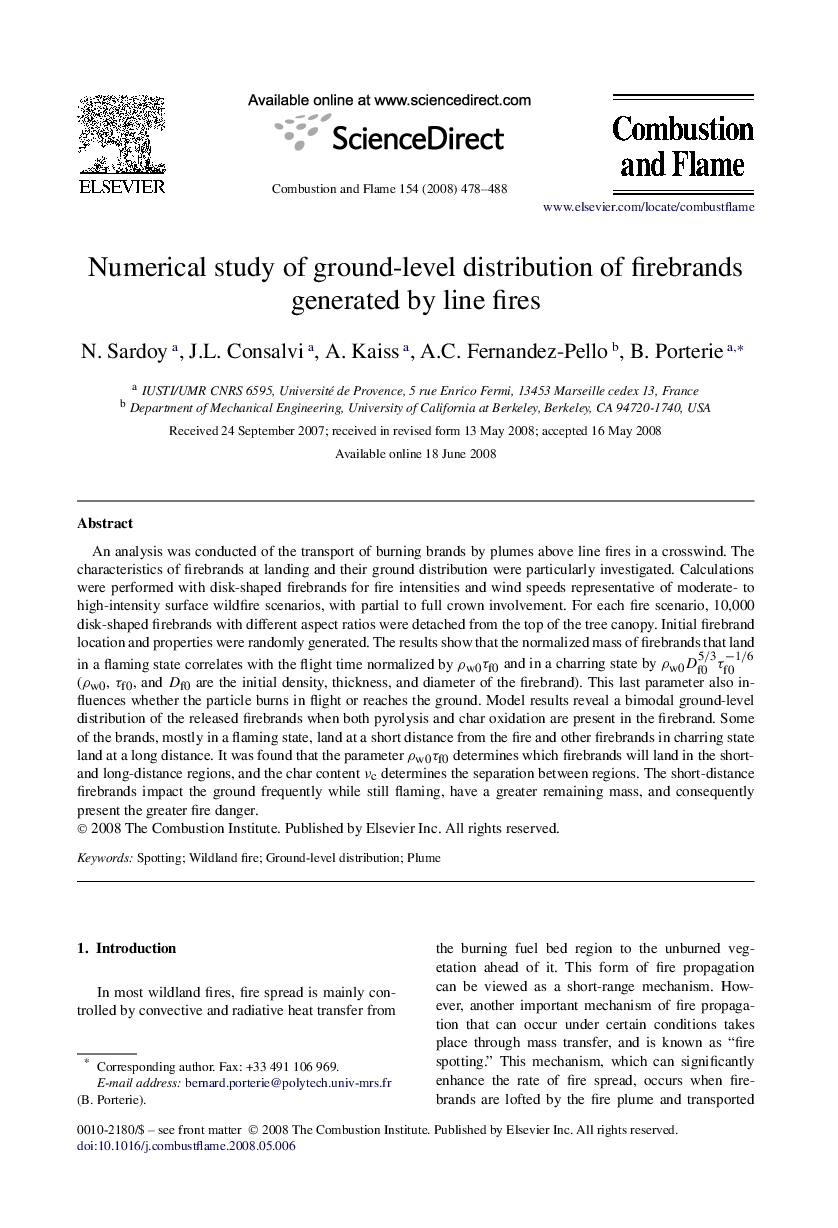| Article ID | Journal | Published Year | Pages | File Type |
|---|---|---|---|---|
| 167831 | Combustion and Flame | 2008 | 11 Pages |
An analysis was conducted of the transport of burning brands by plumes above line fires in a crosswind. The characteristics of firebrands at landing and their ground distribution were particularly investigated. Calculations were performed with disk-shaped firebrands for fire intensities and wind speeds representative of moderate- to high-intensity surface wildfire scenarios, with partial to full crown involvement. For each fire scenario, 10,000 disk-shaped firebrands with different aspect ratios were detached from the top of the tree canopy. Initial firebrand location and properties were randomly generated. The results show that the normalized mass of firebrands that land in a flaming state correlates with the flight time normalized by ρw0τf0ρw0τf0 and in a charring state by ρw0Df05/3τf0−1/6 (ρw0ρw0, τf0τf0, and Df0Df0 are the initial density, thickness, and diameter of the firebrand). This last parameter also influences whether the particle burns in flight or reaches the ground. Model results reveal a bimodal ground-level distribution of the released firebrands when both pyrolysis and char oxidation are present in the firebrand. Some of the brands, mostly in a flaming state, land at a short distance from the fire and other firebrands in charring state land at a long distance. It was found that the parameter ρw0τf0ρw0τf0 determines which firebrands will land in the short- and long-distance regions, and the char content νcνc determines the separation between regions. The short-distance firebrands impact the ground frequently while still flaming, have a greater remaining mass, and consequently present the greater fire danger.
